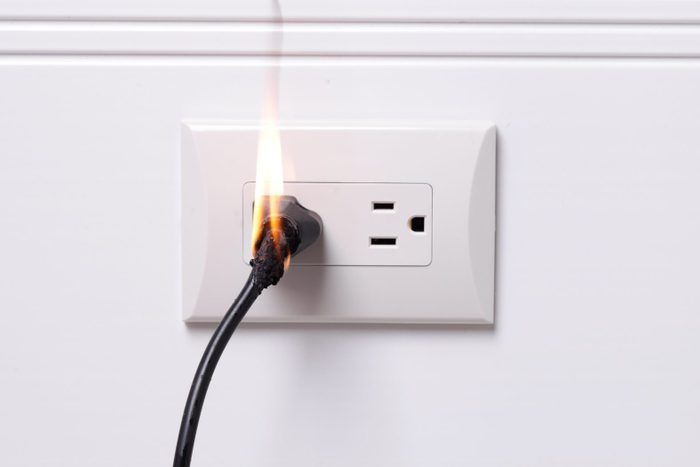
Fire hazard awareness
Your home is your castle. Your refuge. Your safe place. When that tranquility is shattered by fire, it’s devastating. Home fires happen every 93 seconds in the United States, often with tragic results—in 2021 alone, 75% of all fire deaths happened in home fires. Many of these fires occur due to the sort of hidden fire hazard we see daily but often ignore.
In my years working as an electrician, I’ve seen the risks posed by electrical fires, but I also wanted to talk with first responders to learn the things firefighters wish we knew about fire and fire safety. After all, they see firsthand the dangers of common, everyday fire hazards like space heaters, as well as the effects of natural disasters like wildfires.
Home fires often take us by surprise, but we can plan for the worst by taking precautions and being smart. That means keeping up with the maintenance of items that can be fire hazards without proper cleaning and being smart about cooking to avoid grease fires. Read on for more important tips from veteran firefighters Lt. Jimmy Ober and Capt. Jeff Stobbe.
Get Reader’s Digest’s Read Up newsletter for more home safety, humor, cleaning, travel, tech and fun facts all week long.
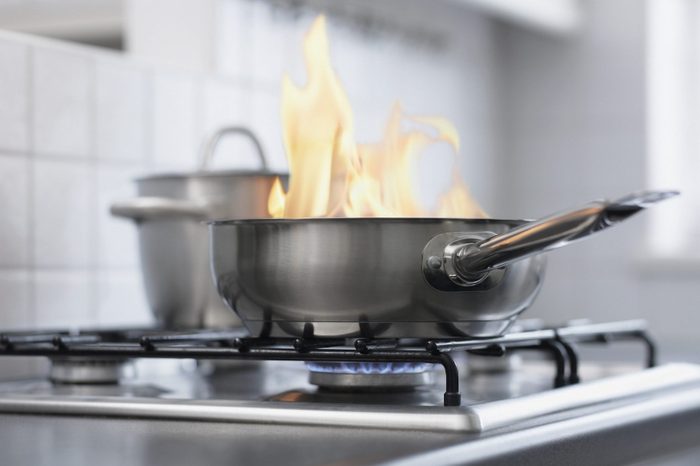
Unattended stoves
Who hasn’t put on a pot of water, then wandered off to another room while it comes to a boil? (Guilty as charged.) As far as poor fire safety decisions go, this is about as bad as it gets. Cooking is the leading cause of home fires and the second leading cause of home fire deaths (behind smoking). “Cooking and smoking fires are the biggest issues we face today,” says Stobbe, a captain with the Westland Fire Department in Michigan.
How to make it less dangerous
Veteran firefighters like Stobbe have a slogan: “Stand by your pan!” Small fires can turn into big ones very quickly. Grease, kitchen towels, food packaging, curtains and wooden spoons can all catch fire in your kitchen, and it doesn’t take much time for a small, manageable fire to take over your entire home.
So how can you lower the danger level? “If you’re going to cook on a stovetop,” Stobbe says, “stay in the room.” And be sure you know the right way to put out a grease fire should your dinner go up in flames.
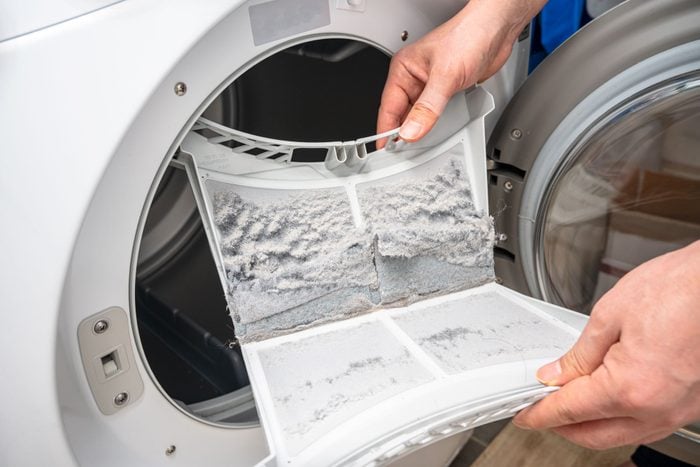
Dryer lint
Firefighters respond to nearly 16,000 fires caused by washers and dryers every year, and dryers account for a whopping 92% of them. The most common cause? Dryer lint, specifically the failure to clean it out.
With its fibers, dust and ability to find its way into the deepest crevices of your dryer, lint is extremely flammable. “Seen it many times,” says Ober, a lieutenant and 24-year veteran with the Tulsa Fire Department in Oklahoma. “The buildup of lint in a dryer and dryer vent pipe really does cause fires.”
How to make it less dangerous
This one’s easy—clean your dryer!—but it has two parts. First, clean the lint trap every time you dry your clothes. You can do this before or after the load, but always start the next one with a clean trap. Second, clean out the exhaust vent at least once a year. You can hire a company to do this, or go the DIY route with a dryer vent cleaner brush or a special tool that fits onto your drill. Stobbe says consistently cleaning out the vent will significantly reduce your home fire risk.
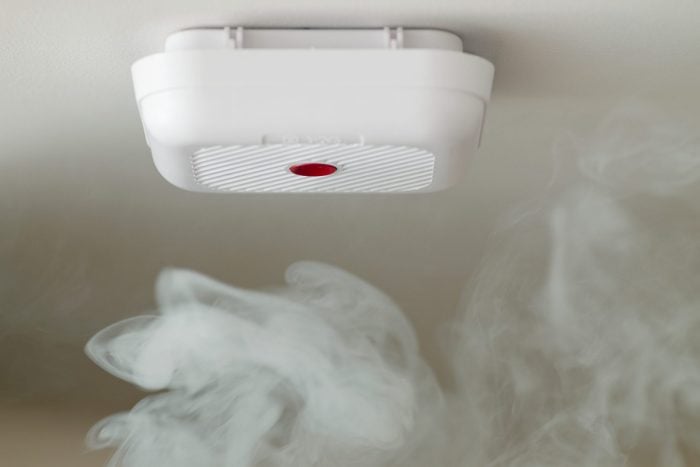
Nonworking smoke alarms
We’ve all been there: You’re setting the table or chatting on the phone and suddenly your kitchen is filled with smoke. “Beep! Beep! Beeeeeep!” goes the smoke alarm. You frantically open doors and windows, and if that doesn’t work … maybe you turn off the smoke alarm? Pull out the battery, even? Whatever’s in the oven looks like a piece of charcoal, and now you’re going out for dinner.
How to make it less dangerous
Busted and battery-free smoke alarms are among the greatest dangers in your home. So repeat after us: Never dismantle a smoke alarm!
“Early detection of smoke allows occupants to escape safely,” says Ober. Most home fire deaths (nearly three out of five) happen when the smoke alarms don’t work or when they’re missing. “It’s a cliché, but smoke detectors really do save lives,” he says.
If your home lacks smoke alarms, get them now. You should have one on every floor, one in each bedroom and one near all sleeping areas. Replace them every 10 years.
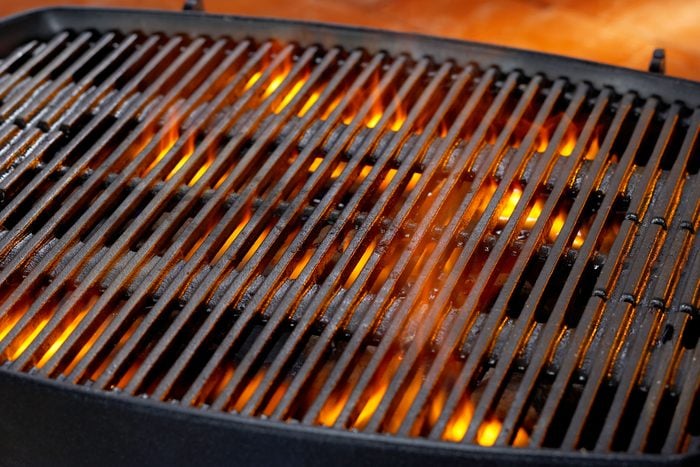
Grills
I store my grill right outside my kitchen so I can cook on the stove and grill food at the same time. That’s not a great idea, according to Stobbe. Gas grills (the kind I have) cause an average of 9,079 house fires per year, and charcoal grills add another 1,440. In addition to the structural fire risk, burns and other injuries from grills send more than 22,000 people to the emergency room every year, nearly half of them children.
How to make it less dangerous
“Grills should be kept [at least] 10 feet away from any structure,” Stobbe says. And by structure, he means your house as well as any sheds, garages or other buildings like greenhouses. The 10-foot rule also applies if you live in an apartment and have a balcony, unfortunately. Check with your landlord to see what your outdoor grilling options are—the last thing you want to do is cause an apartment fire.
And don’t overlook the potential to cause a fire while cleaning your grill. Rushing the process and not allowing the grill to properly cool ups the risk.
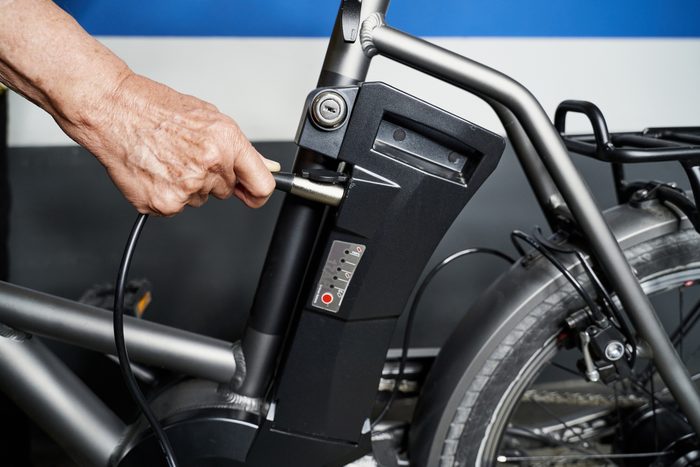
E-bikes
It never fails: I walk into the garage to find that my wife has helpfully plugged in our e-bikes. (I’m happy she remembers, as I usually forget until we have no juice for the next ride.) But—and there’s always a “but”—sometimes they’ve been plugged in for days. Yikes!
Here’s something every homeowner should know: E-bikes and their lithium-ion batteries have been implicated in multiple catastrophic fires, so even though I’m thankful, I’m also right to be worried.
How to make it less dangerous
Monitor the amount of time your e-bikes and lithium-ion batteries stay plugged in, and always unplug them from the wall once they’re done charging. Never charge batteries while you’re not home or while you’re sleeping. Lithium-ion battery fires burn very hot and very fast, so don’t leave them unattended.
Stobbe also stresses the importance of buying only UL-certified batteries and accessories. “UL” stands for Underwriters Laboratories (now called UL Solutions). Products with UL certification comply with strict manufacturing and safety standards. “Many of the cheap products purchased online come from places without all our U.S. safety checks in place,” he says.
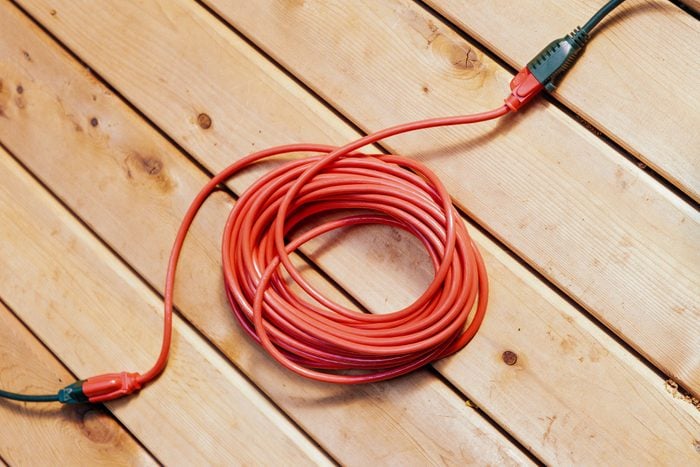
Extension cords
Extension cords save the day when you don’t have electricity where you need it. Outdoor holiday decorations? Check. Doing some work in the yard? Definitely. Bedside lamp doesn’t quite reach? Hold up—how long will you need to keep the lamp there? Extension cords are for temporary use only, which according to the National Electric Code means 90 days.
If that doesn’t sound like a long time, I get it—I’m an electrician, and I know how easy it is to forget about them. But this common household item poses serious risks: An extension cord is a fire and shock hazard because it generates heat, and it’s vulnerable to damage in ways your house wiring isn’t.
How to make it less dangerous
Always buy extension cords that are properly rated for the job (check the label for the watts and amps it can handle). Never use extension cords as permanent wiring, and don’t run them under carpeting, where foot traffic and heat buildup can damage the insulation. If you’re using an extension cord outside, don’t allow vehicle traffic to run over them, and be very careful when mowing the lawn or using power tools.
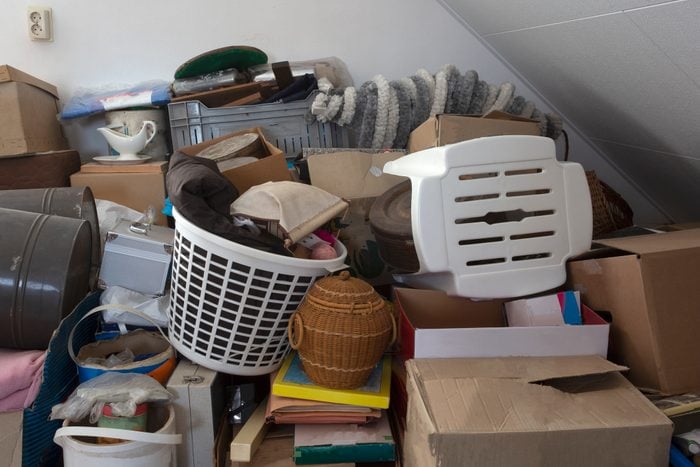
Clutter and hoarding
We all struggle with clutter from time to time, but did you know it’s also a fire hazard? This is particularly true in homes where occupants suffer from hoarding disorder. “Cleanliness and tidiness matters,” says Ober. Blocked exits, falling debris and the increased weight and fire load of clutter make it very difficult for firefighters to do their jobs.
“As a rule, people who keep their houses organized and free from piles of debris and filth” have fewer accidental fires, he says.
How to make it less dangerous
If your home is merely cluttered, it’s time to get organized. If you know or love someone suffering from hoarding disorder, focus on safety while trying to get them help. Install smoke alarms and develop an emergency escape plan—and practice it.
Have compassion throughout this process. People who have hoarding tendencies often do not recognize the danger. Reach out to your local fire department, which might be able to connect you with mental health professionals who can help.
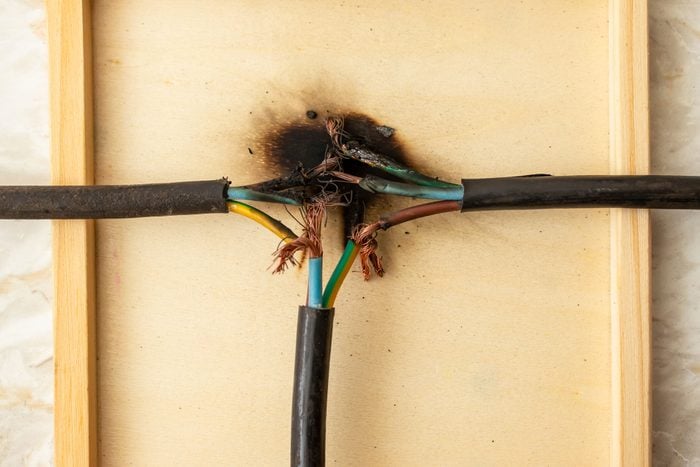
Faulty wiring
When you plug in an appliance, computer or television, you expect it to work safely. That’s why licensed electricians follow stringent code requirements and why you must be alert to problems in your walls, attic and basement that could cause fires.
Electrical fires rank third in fire injuries and deaths (behind cooking and smoking), but they cause the majority of property damage—an average of $1.3 billion dollars per year from 2015 to 2019. That’s scary because most people don’t have any inkling that their wiring is bad.
How to make it less dangerous
One way to identify a fire hazard is to simply pay attention: When you plug things in, do you smell anything? Hear buzzing? Does the receptacle feel warm? These are all signs of an electrical problem. Do your lights flicker, or do you often have to reset tripped breakers in your electrical panel? Get any of these things checked out by a licensed electrician like myself.
Another common cause of electrical fires is critters. Ober says it’s important to keep squirrels and other rodents out of your attic so wires don’t get chewed and exposed.
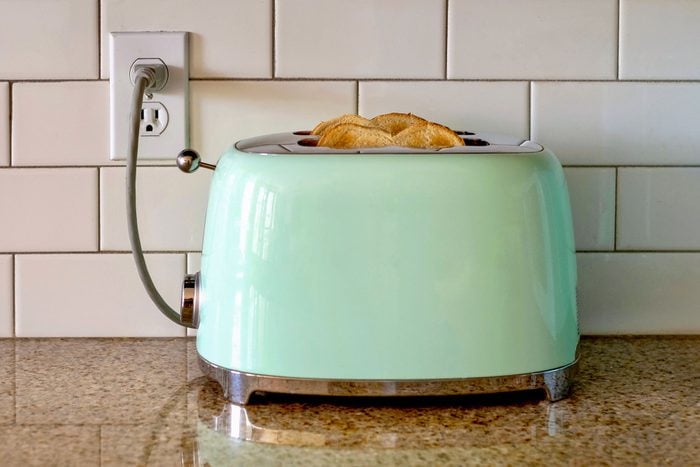
Old appliances
Appliances are expensive. It’s tough to shell out cold, hard cash for the latest technology when that old toaster is working just fine, thank you very much. But old appliances can have outdated safety features, and over time, the cord, electrical connections and insulation can wear out. Leaving them plugged in for years on end means that if something does go wrong, you may not notice it until it’s already engulfed in flames.
How to make it less dangerous
“Regularly check the wiring on appliances,” Stobbe says, “especially older models.” If the cord looks worn or frayed, or if you can see any electrical wires, replace it or replace the entire appliance.
Be sure to unplug appliances when they’re not in use. Things like air fryers, rice cookers and waffle irons don’t need to sit energized when you only use them once in a while. Not only will you reduce your fire risk, but you’ll also cut down on your energy use.
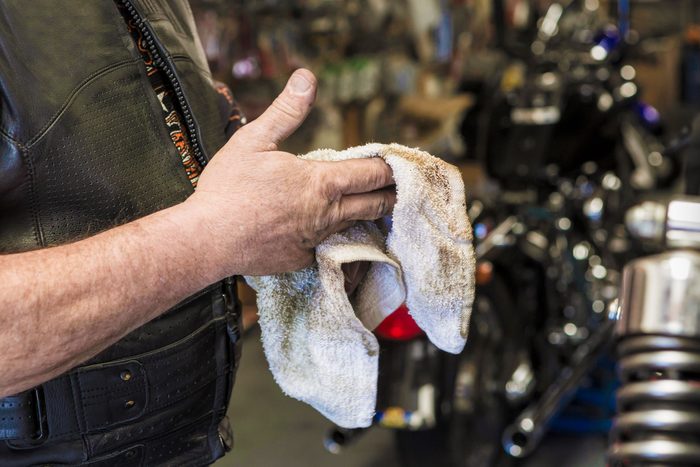
Oily rags
Even if we keep our homes clean and clutter free, sometimes we slack a little in our garage, basement or shop. Maybe you have a pile of rags for wiping your oily hands or cleaning up spills. Talk about an overlooked fire hazard! Did you know you don’t even need an ignition source for these greasy items to burst into flames?
“Oily rags really can combust on their own when piled together,” Ober says. It seems like magic, but it happens through a very real process called oxidation.
How to make it less dangerous
Instead of keeping oily rags for a rainy day, it’s best to discard them. Lay them flat (not in a pile) outside to dry, then submerge them in detergent and water in a container with a tight-fitting lid. Contact your municipality for disposal options.
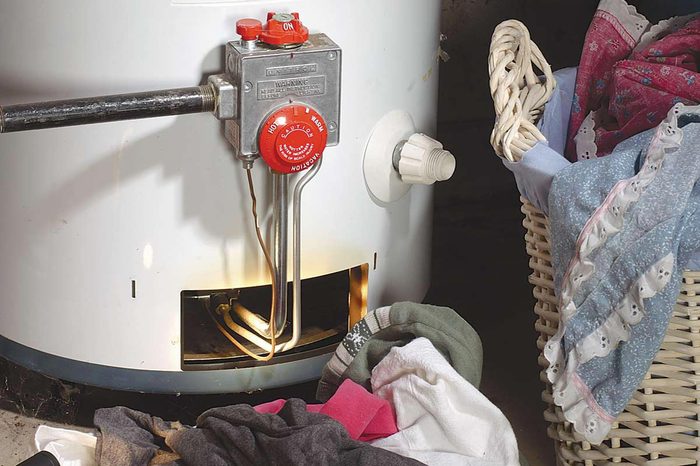
Heating equipment
You might not have oily rags lying around, but you probably have another potential fire hazard in your garage or basement: your water heater. Pilot lights on gas water heaters, furnaces, wood stoves and other heating equipment can ignite combustible material nearby, especially if the appliance isn’t maintained or the area is packed with junk.
How to make it less dangerous
“Keeping things organized and stacked away from heat sources is very important,” Ober says. Clutter, dust bunnies, wood shavings and moving boxes can all go up in flames in an instant if stored too close to ignition sources.
Another tip for making sure your water heater doesn’t become a major fire hazard: Get your heating appliances inspected once a year, and always hire licensed repair technicians to perform maintenance.

Sleeping with the door open
This one sounds kind of strange, but it’s actually common knowledge among firefighters and was even the subject of a study by UL’s Fire Safety Research Institute (FSRI). If there’s a fire outside your bedroom, an open bedroom door is a deadly invitation for the flames to enter while you’re sleeping. The FSRI found that, during a fire, temperatures were 10 times higher in open bedrooms versus closed rooms (over 1,000 degrees vs. 100 degrees).
How to make it less dangerous
When you go into your room to sleep at night, close the door behind you. In Ober’s experience, the simple act of closing doors to sleep stops flames from spreading and keeps the bedroom temperature from spiking. “[It] has saved numerous lives,” he says.
Do this for your kids too, and let people who are staying with you know as well. This is also a great opportunity to practice multiple fire escape routes with your children and guests.
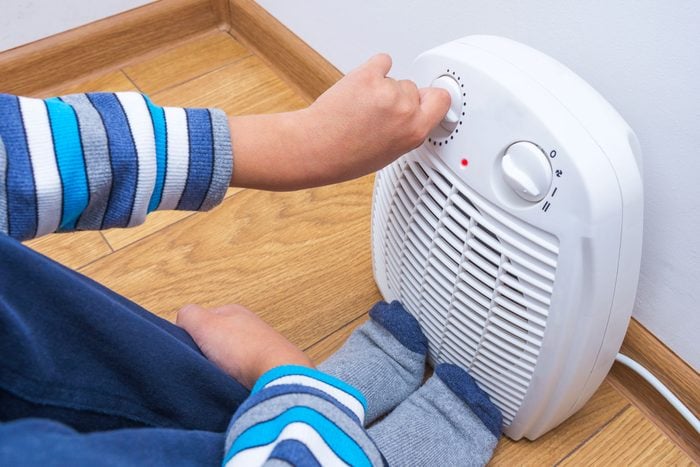
Space heaters
If you run cold, space heaters provide welcome relief from the chill of a drafty office or a chilly bedroom. Unfortunately, space heaters are one of the most commonly misused appliances. Not only can they ignite nearby material, like curtains, bedding and office paper, but they also use a ton of electricity, which means you can’t just plug them into any old receptacle, or worse, an extension cord. Each is a major fire hazard.
How to make it less dangerous
“Space heaters should be 3 feet from anything that can burn,” Stobbe says. But that’s only the half of it. Space heaters must also be the only thing you plug into a 15-amp circuit, such as the one in your bedroom or home office. Because they draw so many amps, space heaters can quickly trip your breaker if you plug them into a circuit that’s already running lights and other equipment. You might think, Hey, no problem. I’ll just grab an extension cord, power strip or surge protector. Nope! Space heaters must be plugged directly into the wall.
About the experts
- Lt. Jimmy Ober is a 24-year veteran of the Tulsa Fire Department in Oklahoma, located at the historic Station 13. In addition to fighting fires, he spearheaded the department’s pink fire truck initiative to raise awareness of breast cancer and research.
- Capt. Jeff Stobbe is dedicated to fire prevention and life safety through his work with the Westland Fire Department in Michigan. He led the launch of a firesetter prevention program for local youth, and he partners with Arson Dog Bella for commercial and residential fire investigations.
Sources:
- NFPA: “Cooking”
- NFPA: “Electrical”
- NFPA: “Grilling”
- NFPA: “Hoarding: Issues for the Fire Service”
- NFPA: “Home Fires Involving Clothes Dryers and Washing Machines”
- NFPA: “Safety with Oily Rags”
- Fire Safety Research Institute: “Close Before You Doze”
- U.S. Fire Administration: “Appliance and Electrical Fire Safety”
